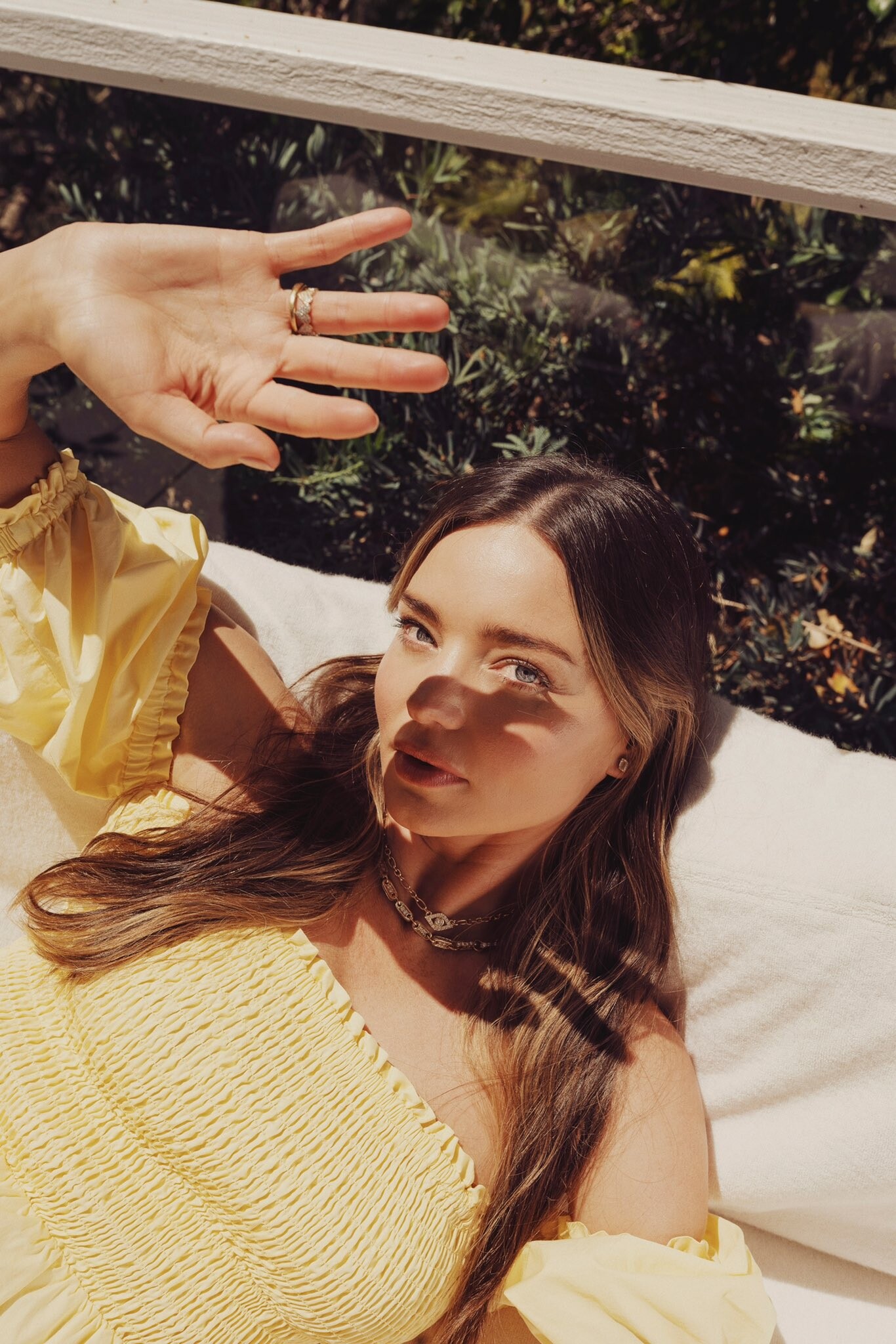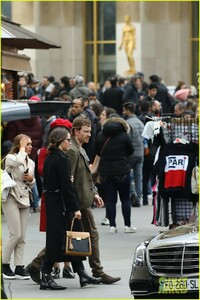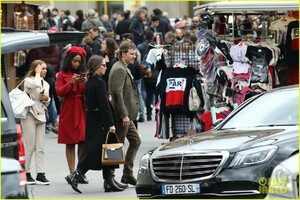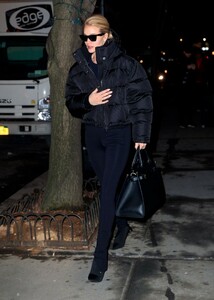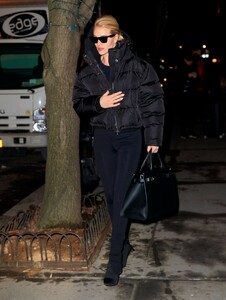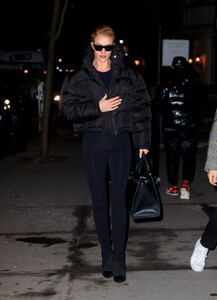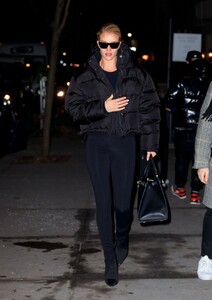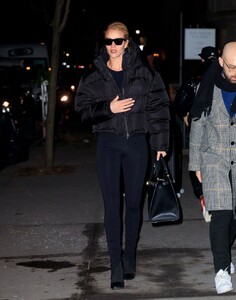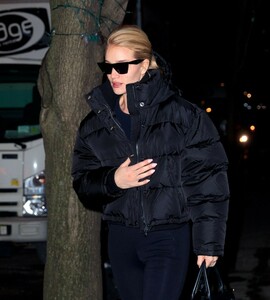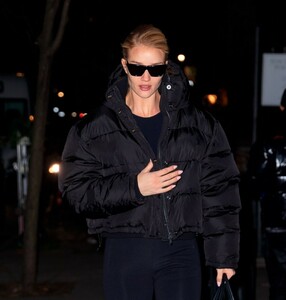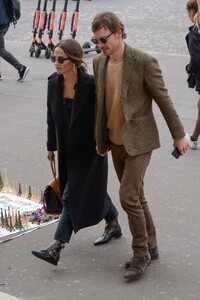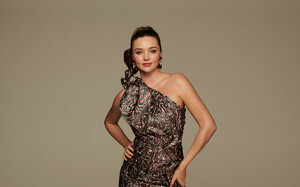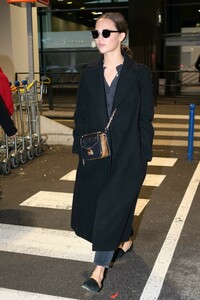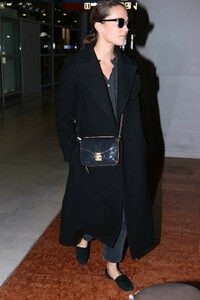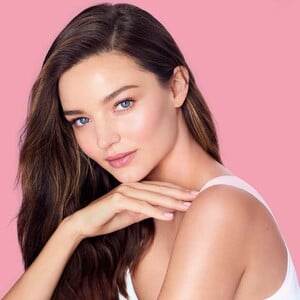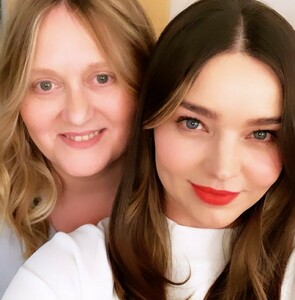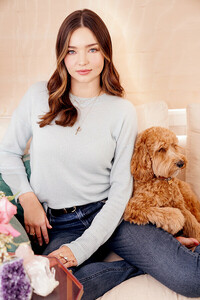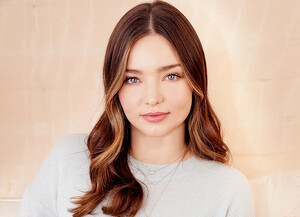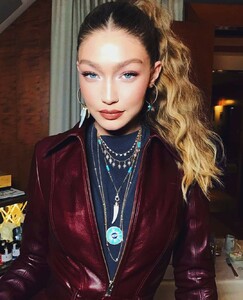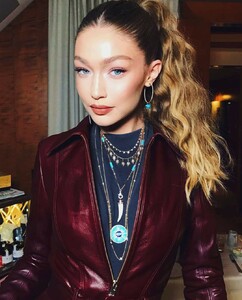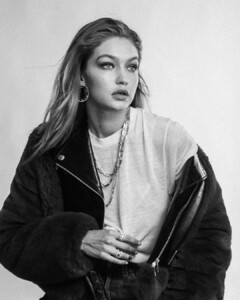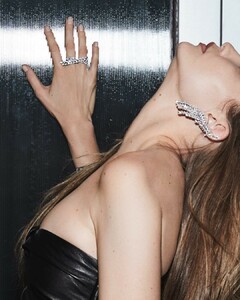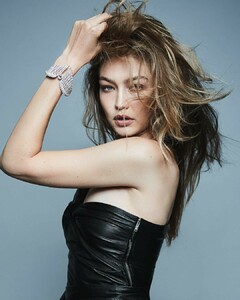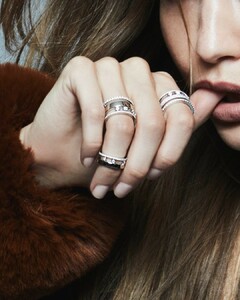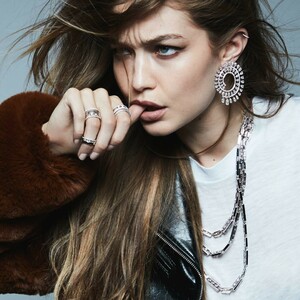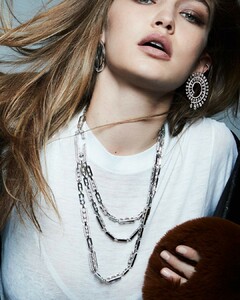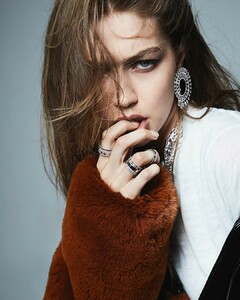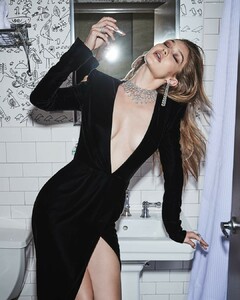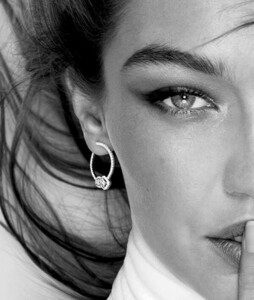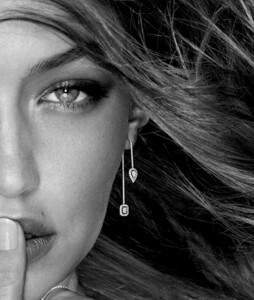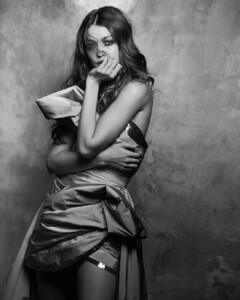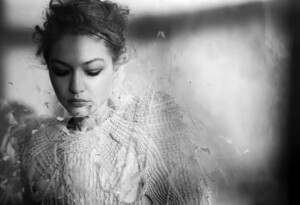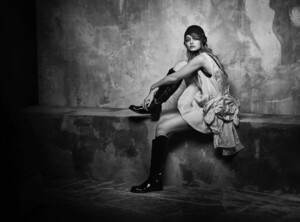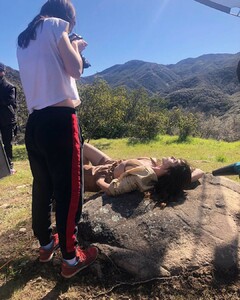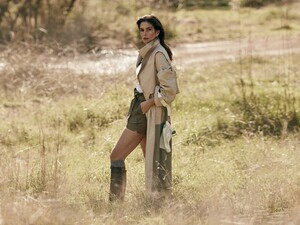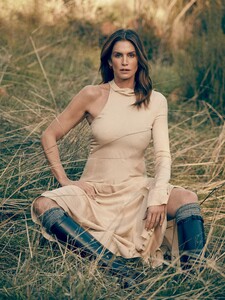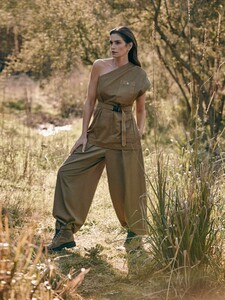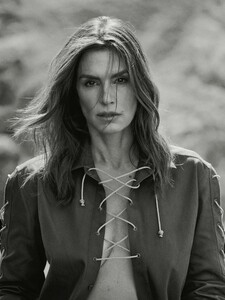Having sat at the top of the modeling tree for 30 years, CINDY CRAWFORD is an authority on the ins and outs of the fashion industry. She speaks to CHRISTINE LENNON about why it’s finally heading in the right direction – and the surprising regrets she has about posing naked
The sun is setting in Thousand Oaks, CA, and the temperature hovering around 40ºF, but Cindy Crawford, 53, who has been shooting in the chilly, expansive grounds of a horse ranch all day, is – as ever – unfazed. “It wasn’t so bad until the wind picked up,” she says, bundled up in a black, faux-fur-trimmed parka and huddled near a space heater in a drafty barn. She reaches for my phone, which is recording our conversation. “Here, I’ll hold this. It’ll be easier to hear. It’s loud in here.”
It’s not hard to see why Crawford has achieved near-mythical status as the world’s most professional – and affable – supermodel. She was the first of her tribe to achieve mega-brand status, and one of only a handful to work without interruption for three decades, tantrum-free. She has also managed to retain that elusive status, relevance, in an industry that’s known for chasing the next new thing. The question is: How? “I just do stuff that’s interesting to me. I do things that are fun, and I think that makes me relevant to my audience,” she says.
The Crawford empire includes her own anti-aging skincare line, Meaningful Beauty; a Cindy Crawford Home furniture collection; and a 20-year brand ambassadorship with Omega watches. As for her modeling model: “You would hope that some of your body of work over 30 years has some kind of staying power. But I keep wanting to do new stuff just to keep myself interested. It’s less inspiring when you’re trying to re-do old pictures of yourself. I just want to be around interesting people. That’s worth it for me.” She admits that she never envisioned herself in her fifties, showing up to work in front of the camera. “I remember thinking at 20 that I’d model for five years, then go back to school and get a real job. Then at 25 I thought it could last five more years. Then at 30, it was the same thing.”
It’s her self-awareness, more than a shrewd business sense, that she credits for her lengthy career. “I think there was this perception that I wasn’t modeling for a while. I was working, but, not for, you know, Victoria’s Secret. What I think I was good at was seeing myself as a brand, or understanding what ‘Cindy Crawford’ the brand was. It’s all-American, sexy but approachable, and so choosing different jobs that fit that image was one of the first things I was good at,” she says.
Another area in which Crawford excels is taking care of herself, and not letting her age either limit or define her completely. Proof of that is in the pages of photographer Russell James’ new book, Angels, in which Crawford appears naked. “He asked me how I wanted to be photographed. You could be as free or as not free as you wanted,” she says. “Part of the reason I wanted to do it was that I thought, at what age is being naked not beautiful anymore? Is there a sell-by date on us? I don’t look the same as I did at 20, 30 or even 40. If we take care of ourselves, why not? Am I frolicking on the beach in a string bikini? No. But there is a place where I want to feel beautiful naked, in my private life, with my husband. [Russell] was tapping into that real place – not high heels, not a lot of makeup, not coy, just a real woman who doesn’t have clothes on.” Not only does Crawford not have regrets about her two Playboy spreads (from 1988 and 1998) shot by legendary photographer Herb Ritts, she wonders why she wore clothes at all. “I look back at some of my old Playboy pictures and I think, ‘Why wasn’t I walking around naked all the time?’” she laughs. “I’m not getting younger. So I want to celebrate who I am today.”
It’s well documented that Crawford has been happily married to restaurateur-turned-tequila mogul Rande Gerber, 56, for 21 years. Gerber, his wife says, has no need to be the center of attention, and is happy to be spotlight-adjacent to both her and his Casamigos tequila business partner, George Clooney. More recently, Crawford has become the matriarch of the small (but productive) Crawford-Gerber modeling dynasty, thanks to the careers of her two children: Presley, 19, who has worked for Calvin Klein and Dolce & Gabbana, and Kaia, 17, who is already a YSL Beauté ambassador and has walked for Prada and Chanel among others. In fact, Kaia has been working the occasional job since she was 13, when IMG approached her parents with the idea of signing her. “It was a good thing that she couldn’t work on the runway until she was 16. There are laws about that. After that I couldn’t really hold her back,” Crawford says. “You hope that all of the advice and guidance and role modeling that you did sticks. That’s the stage of parenting when you think, “Ok, hope you can fly!”
Last year, when Kaia turned 16 and was professionally eligible for runway modeling, Crawford traveled with her, spending time backstage at some of her old haunts. “Kaia had some advantages,” she admits. “She is my daughter and people know that. But when people say that I bought her a cover of a magazine, I think, if I was going to buy a cover for someone, it would be me! If I could get someone into a fashion show, I would be getting it for myself.”
For the most part, Crawford thought that the shows were business as usual. Many of the same people – makeup artists, stylists, photographers and designers – were in the mix backstage. “Even the designers were the same, like Ralph Lauren and until just recently Karl Lagerfeld,” she says. Mother and daughter both considered Lagerfeld, who passed away just days before this interview, a friend. “You can never just say, ‘Oh, it was a good life,’ and not be sad about it, no matter how old someone is when they die. But Karl did have such an incredible, prolific life, and he was doing what he loved almost up until the very end,” she says. “He didn’t take himself so seriously. Like [him] saying, if you buy sweat pants you’ve given up – people shouldn’t take it too seriously. He was eccentric.”
Visiting with old friends and seeing the world of runway modeling through her daughter’s eyes was nostalgic at first. But the world has new challenges that Crawford doesn’t love. “The thing that’s different is that social media is part of the job. We weren’t constantly being photographed in what we were wearing to the show. There is more pressure to produce content every day. It’s like a hungry little beast, an animal that wants more and more. It’s never like, ‘OK, you’re good,’” she says.
While most parents of teenagers are monitoring their kids’ social-media presence (which the model admits to doing, on occasion, though she claims she has to “pick her battles”), Crawford finds the aggressive comments from strangers far more discouraging than any pressure Presley and Kaia might receive from their profession. “I can’t believe how hateful people can be,” she says. “As much as people put garbage on my Instagram, it doesn’t bother me. But when they do it to my kids I think, grrr. But you’re not supposed to go after [the haters]. It’s shocking. We’re becoming more immune to it because people just lash out. We have to be so politically correct in one way. If you’re not famous, you can say the most hateful stuff. God forbid you [as a celebrity] offend the wrong person.”
In many ways, fashion has matured in the same way Crawford has – gracefully but ridiculously slowly, getting incrementally wiser and more perceptive all the while. Designers are recognizing that the typical customer who can afford to buy their clothes wants to see herself represented more. And that’s another reason models, like Crawford and her contemporaries Christy, Naomi, Linda et al, are seeing unprecedented career longevity.
“Women my age want to feel like [designers] are making clothes for us,” she says. “I’ve gone to stores where I’m a large. I’m the largest size in the store! Especially here in LA – a lot of designers don’t make anything larger than a 42 or a 44. So the brands that can capture that audience and really give them fashion, not just pay lip service to it, are doing the work. Rihanna’s brand Fenty really embraced that idea. There’s a lot to be done in that area, and not just to throw in a token larger woman, or a token older woman. They need to integrate it more.”
So there is still work to do then. But there has been progress, says Crawford, who has played her part in that, as in many of the fashion industry’s more recent evolutions. “I do see [fashion] becoming more inclusive and it makes sense. I think, ‘What took us so long?’ Women of all ages, shapes, sizes, colors, backgrounds and jobs are buying the clothes. We have to show them: ‘Yeah, you can wear this, too. And here’s how.’” Here, indeed, is how.
Source: netaporter.com
